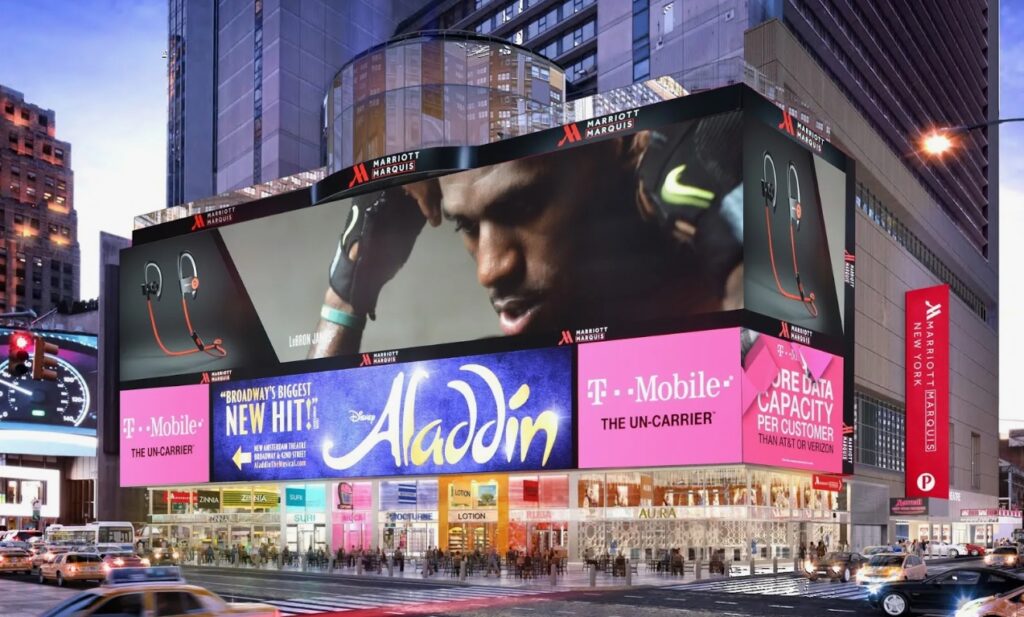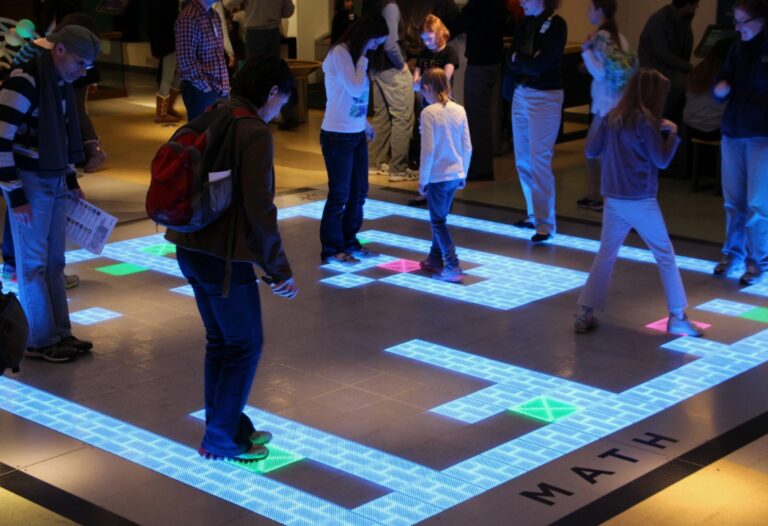Table of Contents
A. What is an Outdoor LED Display?
B. Benefits of Investing in Outdoor LED Displays
C. Factors Affecting the Price of Outdoor LED Displays
D. Price Range and Application Scenarios for Outdoor LED Displays with Different Pixel Pitches
E. Tips for Choosing the Right Outdoor LED Display
F. FAQs on Purchasing Outdoor LED Displays
G. Conclusion
A. What is an Outdoor LED Display?
An outdoor LED display is an electronic device specifically designed for outdoor environments, utilizing LED (Light Emitting Diode) technology to display text, images, and videos. Give you a comprehensive understanding of outdoor LED digital signage. These displays are commonly installed on building facades, in squares, stadiums, alongside highways, and more, serving purposes such as advertising, information dissemination, and live events. Outdoor LED displays feature high brightness, waterproofing, dustproofing, and are capable of operating in various weather conditions. Here is the knowledge about nit brightness.

B. Benefits of Investing in Outdoor LED Displays
- High Visibility: The high brightness of outdoor LED displays ensures clear visibility even in daylight.
- Advertising Impact: Dynamic images and video advertisements attract more attention and enhance advertising effectiveness.
- Information Delivery: Real-time updates for traffic conditions, news, or emergency notifications.
- Brand Promotion: Enhances brand image and showcases corporate strength.
- Return on Investment: Outdoor LED displays can generate stable returns through advertising leasing and other means. Here is the guide to calculating the rental price of LED screens.

C. Factors Affecting the Price of Outdoor LED Displays
- Resolution (Pixel Pitch): Higher resolution (smaller pixel pitch) typically increases the price, as it allows for clearer images.
- LED Quality: High-quality LED chips provide better display effects but at a higher cost.
- Technology Type: Different technologies, such as SMD and DIP, have varying costs and effects. What is an SMD LED screen? What is a DIP LED screen?
- Materials and Manufacturing: Durable casing materials and fine manufacturing processes affect the price.
- Screen Size: Larger screens require more LED modules, increasing overall cost.
- Protection Level: Outdoor LED displays need waterproofing, dustproofing, and wind resistance, with higher protection levels increasing costs.
- Control System and Software: Different control systems and software functionalities impact the user experience and management ease, affecting the price.
- Installation and Maintenance: The complexity of the installation environment, installation fees, and ongoing maintenance costs also influence the total price.

D. Price Range and Application Scenarios for Outdoor LED Displays with Different Pixel Pitches
The following prices are estimates, and actual prices may vary based on specific projects and supplier quotes.
- P10 (10mm Pixel Pitch)
Price Range: Low, approximately $100 to $300 per square meter, depending on brand and configuration.
Applications: Suitable for long-distance viewing, often used for outdoor billboards, large event backgrounds, stadiums, etc. - P8 (8mm Pixel Pitch)
Price Range: Medium, approximately $200 to $500 per square meter.
Applications: Suitable for medium to long-distance viewing, commonly used in shopping malls, commercial advertising, traffic information displays, etc. - P6 (6mm Pixel Pitch)
Price Range: Higher, approximately $300 to $800 per square meter.
Applications: Suitable for medium-distance viewing, used in high-end commercial advertising, transportation hubs, outdoor information dissemination, etc. - P5 (5mm Pixel Pitch)
Price Range: Higher, approximately $500 to $1200 per square meter.
Applications: Suitable for closer viewing distances, used in commercial centers, high-end retail stores, brand flagship stores, etc. - P4 (4mm Pixel Pitch)
Price Range: Very high, approximately $1000 to $2500 per square meter.
Applications: Suitable for close viewing, used in control rooms, conference rooms, high-end retail environments, etc. A guide to P4 outdoor LED screens. - P3 and Below (3mm and Smaller Pixel Pitch)
Price Range: Extremely high, approximately $2000 per square meter and above.
Applications: Suitable for very close viewing, used in high-end conference rooms, control centers, broadcast studios, etc.
E. Tips for Choosing the Right Outdoor LED Display
- Define the Purpose: Choose the appropriate resolution and size based on specific needs. For example, high-resolution screens are necessary for close-up advertisements, while larger announcement screens can opt for lower resolutions.
- Consider Environmental Conditions: Outdoor LED displays must withstand various weather conditions, making it crucial to select screens with appropriate protection levels.
- Budget Planning: Choose screen specifications and additional features within your budget to ensure the best cost-effectiveness.
- Supplier Selection: Choose experienced and reputable suppliers to ensure product quality and after-sales service.
- Technical Parameters: Understand the technical specifications, such as brightness, refresh rate, and power consumption.
F. FAQs on Purchasing Outdoor LED Displays
Q: Can outdoor LED displays be used around the clock?
A: Yes, high-quality outdoor LED displays are designed for 24/7 use and feature waterproof, dustproof, and UV-resistant properties.
Q: How should outdoor LED displays be maintained?
A: Regularly clean the screen surface, check the power supply and connections, ensure proper ventilation and heat dissipation to maintain long-term stability.
Q: How long do outdoor LED displays last?
A: High-quality outdoor LED displays typically last 5 to 10 years, depending on product quality and maintenance.
Q: What is the power consumption of outdoor LED displays?
A: Modern LED technology is relatively energy-efficient, but specific power consumption depends on screen size, brightness settings, and other factors.
Q: What are the types of outdoor LED display installations?
A: There are 11 types:
- Fixed Installation: The most common type, where the screen is permanently installed on building facades or dedicated structures.
- Suspended Installation: Screens are hung with steel cables or frames, suitable for large area coverage or prominent display.
- Pillar Installation: Screens mounted on independent steel pillars, ideal for open areas like squares or parks.
- Rooftop Installation: Mounted on rooftops for broader viewing angles.
- Embedded Installation: Screens embedded into building facades, blending with architectural aesthetics.
- Mobile Installation: Screens mounted on trailers or platforms for temporary or touring displays.
- Curtain Wall Installation: Screens integrated as part of a building’s curtain wall, which can be transparent or semi-transparent.
- Bridge Installation: Screens mounted on pedestrian bridges or flyovers, using the bridge structure as support.
- Tunnel Installation: Screens installed in tunnels or underground passages for information or advertising.
- Boat Installation: Screens mounted on vessels, suitable for water-based advertising or events.
- Stage Background Installation: Used as backdrops in stage performances or events to enhance visual effects.

Q: What are the control methods for outdoor LED displays?
A: There are 7 types:
- Wired Control: Uses Ethernet or RS485 connections for remote control.
- Wireless Control: Utilizes Wi-Fi, 4G/5G, Bluetooth, or RF wireless technology for remote control, ideal for locations where wiring is difficult.
- Centralized Control: Allows control of multiple LED displays simultaneously, suitable for large advertising networks or information dissemination systems.
- Distributed Control: Each screen or group of screens has its control unit, suitable for large-scale deployments, enhancing system stability and flexibility.
- Cloud Control: Uses cloud computing technology for control and management via the internet, enabling remote access and data storage.
- Mobile Device Control: Control via smartphone or tablet applications.
- PC Software Control: Uses specialized PC software for content editing, playback, and monitoring.
G. Conclusion
Outdoor LED displays are an effective and flexible advertising tool with a high return on investment. They can help businesses enhance brand awareness and market influence. When selecting and purchasing an outdoor LED display, it is essential to consider factors such as usage requirements, environmental conditions, and budget to choose the right product and supplier, ensuring the best user experience and economic benefits.





